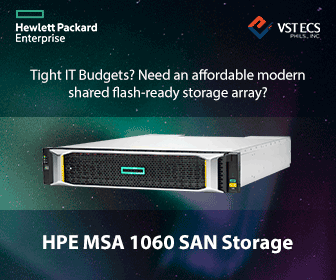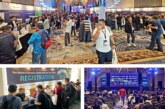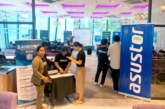We all know that adapting to the new normal is necessary for business continuity. Companies are changing the way they operate and conduct their business to meet evolving customer demands and purchasing behaviors. The more fortunate ones are accelerating their efforts to expand their capacities to meet a surge in demand. On the flipside, industrial businesses are faced with their own set of challenges, from managing operations remotely to disruptions in the supply chain.
The real winners are companies that have already embarked on their digitization journey. Industrial players who have adopted Industry 4.0 technologies such as automation and predictive maintenance can focus on improving productivity and growth instead.
“No matter where the company sits currently in the adoption curve, it is imperative that they look forward and focus on ensuring business resiliency and continuity. It is time to start future proofing the business, and more importantly doing it effectively. In their digitization journey, companies, whether industrial or commercial in nature, will face several hurdles that can be mitigated through the effective integration of both operational technology (OT) and information technology (IT),” explains Tony Kang, Vice-President, Secure Power Division, Schneider Electric Philippines.

Kang identified a few challenges and how Industry 4.0 technologies address these:
Challenge #1: Managing Data Explosion
According to a KPMG research, enterprises will spend US $232 billion on OT and IT technologies in 2025, compared with just US$12.4 billion in 2018. Companies that are spending on artificial intelligence (AI), machine learning, and robotic process automation (RPA) technologies will see explosive growth over the next few years, with about half of enterprises using the technologies at scale by 2025. With growth and greater adoption of technology comes an explosion of data. The International Data Corporation predicts that there will be 80 billion connected devices in 2025, which will generate 180 trillion gigabytes of new data that year alone.
All machines that produce millions of data must be collected, aggregated, and analyzed in real-time so that companies can derive value from it. The ability to fully harness information from physical assets and use it to drive informed decisions is important to the full realization of Industry 4.0. With the proliferation of connected devices and as their capabilities expand, there is a need for real-time decision making and data to be processed instantly untethered from cloud computing’s latency. This environment of computational capacity out of the cloud—and close to the source—is where devices and platforms can do analytics in real-time without first sending data to the cloud. This environment is also known as the Edge. Gartner reveals that 75% of all data will be processed at the edge by 2025.
Advertisement
Challenge #2: Achieving Seamless Integration between OT and IT
Driven by the accelerated rise of smart technologies, industries are bringing together Industrial Internet of Things (IIoT), connected machines, robots, sensors, smart devices, and real-time data analytics to integrate and automate various tasks of the manufacturing system. However, the integration of OT and IT are often disconnected and managed in silos. The combination of Edge computing and industrial IoT devices will make it easier to streamline industrial processes, optimize supply chains, and create the “smart” factory.

Challenge #3: Having Greater Visibility of the Data You Generate, at Speed
All machines in an industrial or manufacturing facility that generate data need to be controlled and managed effectively so that it brings value to the operations. The process starts when sensors collect data from the environment. They feed data into the OT system that then digitizes them. These digitized data then cross over to IT side for processing before they head to the data centers. This is where edge IT systems, which perform more analysis, come into play.
Edge IT processing systems generally sit in the facility or location that is the closest to the sensors. While it is possible to process the data at the data center, it does, however, take a longer time. IIoT implementation’s actual ROI value is realized through actionable insights derived from the collected IoT data, in real time. This could only be possible with the help of a high-performance analytics platform and infrastructure at the source at the Edge.
![]()










